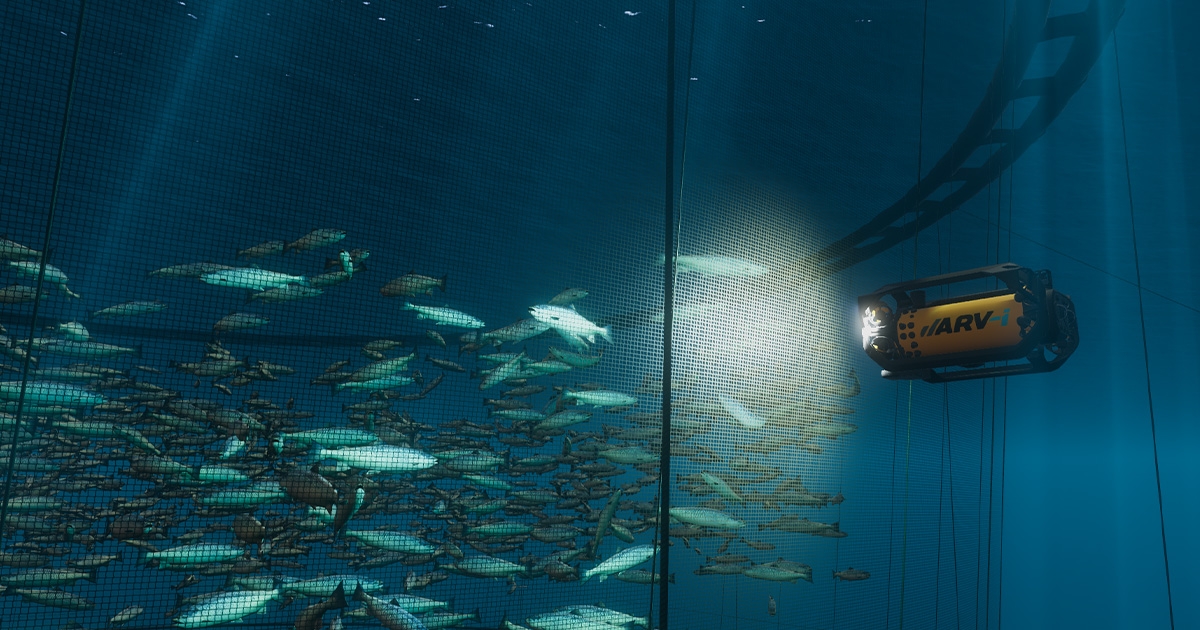The Future of Marine Robotics and Digital Twins

Despite having spent years in the Ocean Energy sector, we at GRi Simulations owe our soft hands and dry socks to having been in the ancillary world of ROV simulation, and this experience is what informs our perspective on this topic.
Over that time, we have had dozens of projects creating digital twins of marine robotics—mainly simulations of ROV operations; but in recent years we have developed more and more projects working with AUVs (Autonomous Underwater Vehicles), USVs (Unmanned Surface Vehicles) and developed digital twins of subsea project assets, mainly for the oil and gas sector. Combining these digital twins with more relevant, timely, accurate and accessible data has created huge opportunities for enhanced operational and engineering design efficiencies.
GRi Simulation’s Virtual Remotely Operated Vehicle (VROV) simulator software was first released in 1999, designed to facilitate ROV pilot training by creating efficiencies of high-fidelity training without requiring vessel time.
As time went on, new and interesting simulation challenges continuously arose in the areas of hazard identification, ROV accessibility, equipment design and procedure verification. Sometimes GRi would be tasked to simulate complex scenarios such as a riser pull-in or pipeline repair operation, or be asked to simulate a small operation or the functionality of a tool to address a specific problem. It seemed there was always something that could be learned from the simulation element that could reduce risk and increase efficiency, and sometimes it would identify an issue that would not otherwise have been found until the ROV was on-site. But it seemed to be always about risk reduction, for both for personnel and the environment, and saving time and money.
More recently, we have observed that these concerns remain, but the environmental risk now includes net zero emissions as a necessary goal; and net zero approaches, digitization and digital twinning are critical means to these ends.
DIGITAL TWINS
A digital twin is a virtual representation of a real-life asset or system, containing as much pertinent information as possible, allowing it to be used for visualization, simulation, evaluation, and predictive planning among other use cases. GRi’s first foray into virtual models of real-world assets were simulations supporting field design and construction projects in the Gulf of Mexico, the North Sea, West Africa, and the South China Sea.
Currently, GRi’s iDEA-DT (Interactive Design, Engineering & Analysis—Digital Twin) software is our most recent software application, designed for interactive data connectivity and visualization along with operational simulation capabilities and subsea architecture design tools for offshore assets. iDEA-DT development is being greatly facilitated by membership in IDTA (Industrial Digital Twin Association) GRi develops solutions to support Industry 4.0 initiatives and promote utilization of the standardized digital twin data model, the Asset Administration Shell (AAS), which is the digital basis for autonomous systems and AI. Simulations and such digital twin-enhanced virtual environments with integrated historical, current, and real-time data will play a larger role in ROV or AUV development and operations as autonomy and artificial intelligence designed to respond to critical events with optimal human intervention.
AUTONOMOUS VEHICLES & NET ZERO
Over the years, the industry has progressed from divers to human pilots for ROV operations, supported by functions such as auto-heading and auto-depth, to station keeping and way-point navigation. Interest in and development of autonomous vehicle systems has expanded globally and visionaries in offshore energy have identified remotely operated or autonomous oil and gas platforms, which minimize vessel activity through reduced crew and transport requirements. This combined with Asset Integrity Management systems, Inspection Maintenance and Repair campaigns are expected progress from ROV support vessel campaigns to unmanned systems supported by seabed resident docking platforms or deployment from an AUV – such as the HonuWorx Loggerhead.
HONUWORX LOGGERHEAD
The HonuWorx Loggerhead solution is an all-electric AUV that acts as a mothership, transporting and deploying ROV’s at their mission site and can operate year-round. The Loggerhead system isn’t affected by weather systems above the ocean’s surface, and once deployed the Loggerhead can respond immediately, requires no staff, and produces zero CO2 emissions.
During phase 1 simulator development of Loggerhead, HonuWorx commissioned GRi Simulations to develop a 3D interactive model of their prototypes for testing in virtual environments. This project involved modeling the Loggerhead vehicle, including several interactive components such as: operable hatch doors, latches for the buoy and ROV, dynamic tethers and a variable ballast system that could be altered during the simulation in increments of 1 kg. In addition to Loggerhead, the scenario included the surface buoy and a Saab Seaeye Leopard ROV, to be deployed from the Loggerhead mothership and is controlled by a plug and play joystick system. Upcoming simulator phases will help establish and test the autonomous control system for the platform.
TRANSMARK SUBSEA ARV-i
Earlier this year, GRi began work with Boxfish Research and Transmark Subsea to simulate the ARV-i (arv-i.com), an autonomous underwater vehicle, designed to continuously monitor assets for oil & gas, wind farms and aquaculture. This tether-less vehicle can operate fully autonomously or be piloted with manual controls and operates without a tether utilizing its own resident docking platform. GRi provided ARV-i scenarios in a virtual aquaculture facility featuring dynamic salmon models, in addition to a virtual windfarm and oil and gas environments.
Keeping a close eye on and assisting in the development of new technologies has been one of the most interesting and satisfying elements of GRi’s time in ocean technology; and we are looking forward to seeing more and more collaborations come to fruition as the future of marine robotics research and development is realized.
For more information, visit: www.grisim.com.
This feature originally appeared in Ocean News & Technology's Magazine December 2022 edition. To read more, access the magazine here.

